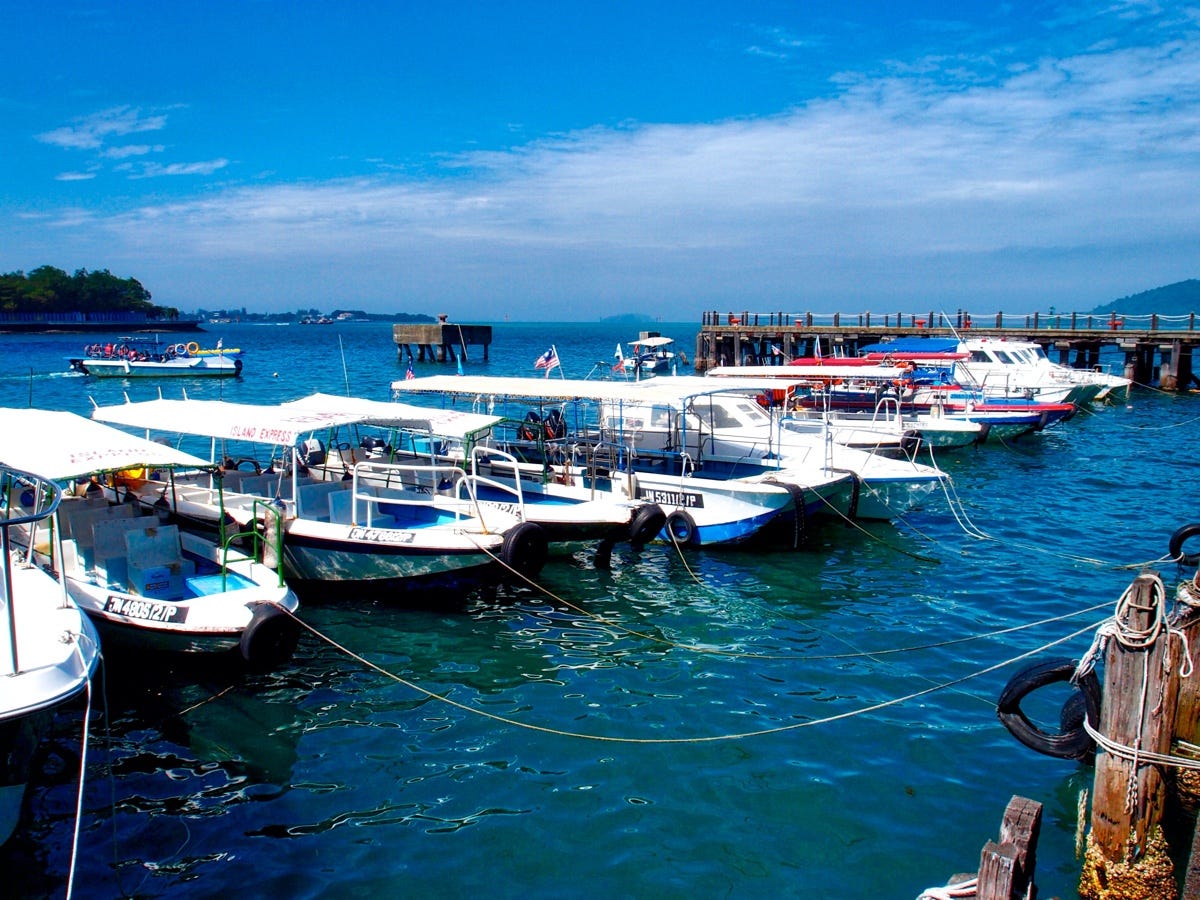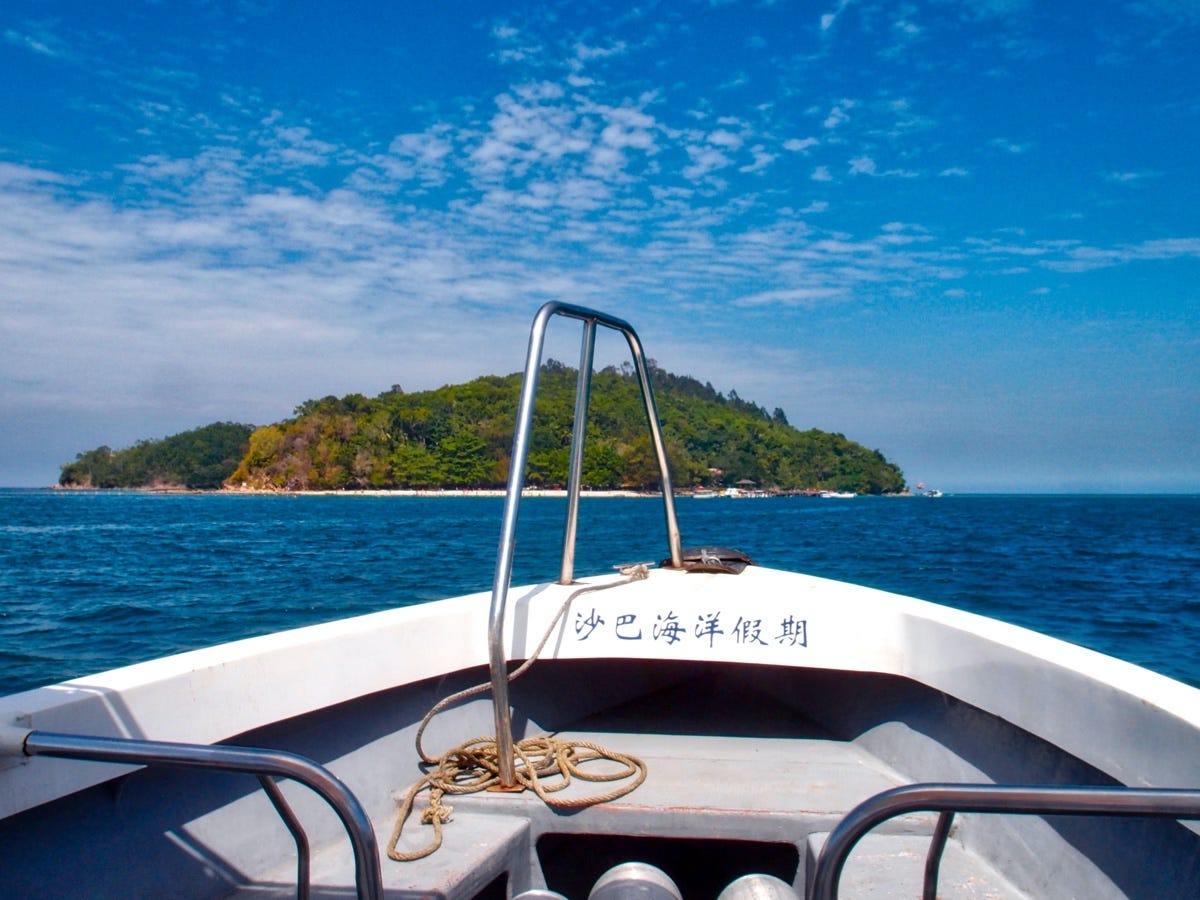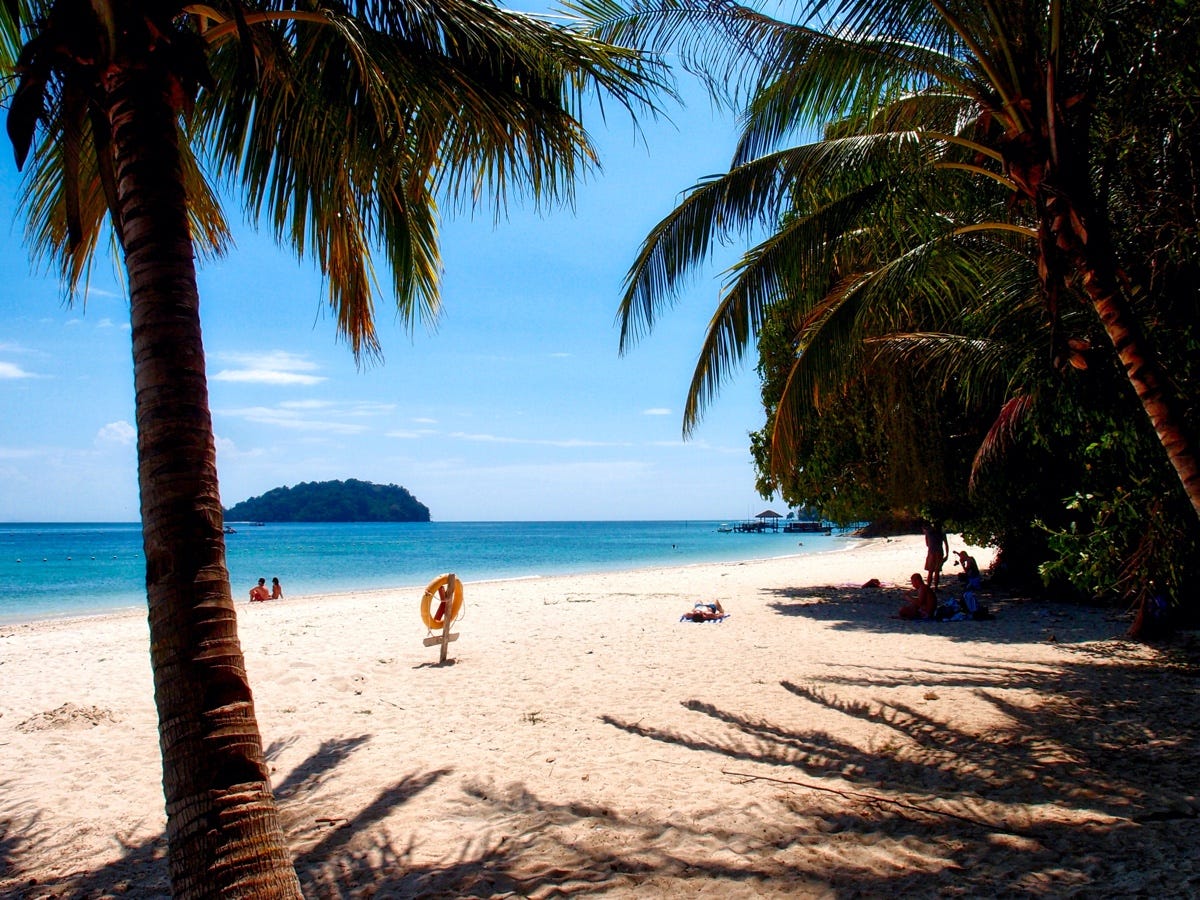I wrote ages ago about when I learned to dive on the Togean Islands in Sulawesi, Indonesia. It had taken me years to work up the courage to learn, and that first breath underwater had me sold. Barely two years later, I stopped for good.
In the intervening period I was lucky enough to dive Komodo—it was amazeballs. I found my dive log book today, and the last entry I have is for the Sugar Wreck off of Perhentian Kecil in Malaysia. It was only my 19th dive—so I was far from experienced. My 20th—and my last—was in the waters off Kota Kinabalu in Sabah, Malaysia.

Three kilometres off the coast of Kota Kinabalu, lies an archipelago of islands. Back in 1974, the creation of Tunku Abdul Rahman Park incorporated two of the islands—Gaya and Sapi. In 1979 the park grew to include three more—Manukan, Sulug and Mamutik. Like many national parks, this is not quite as protected an area as you might expect. The islands are exploited—there are resorts, water sports and piers. There is even a zip–line between Gaya and Sapi.
While I’m not positive, I’m pretty sure that the smallest island, Mamutik, was where I went for my 20th—and last—dive.

There were two other divers in the group, both German and far more experienced than me. During the dive briefing, they donned their gear like second nature. Meanwhile I was still very much trying to remember what went where. The divemaster helped me, but my BCD (a vest like thing you control buoyancy with) felt wonky. I was sure I had too much weight on, but whatever, it was time to go.
Splash, splash, splash, splash. The four of us roll in off the side of the boat into the still water. A quick check, and then we start to submerge.
From the moment I had been struggling to get my BCD to fit properly, everything felt wrong. Once underwater, we sunk in a row to follow a drop–off along. Despite the calm waters, visibility was not great, and the reef was poor.

The whole time I was struggling to keep my buoyancy right. Rather than a steady glide down, I was zigzagging—a little up, a lot down, up and down. I found I was paying all my attention to getting my buoyancy right, rather than taking in my surrounds. It was frustrating, and not fun.
The dive continued. The divemaster pointed out creatures and critters—a sea snake wove between us—plenty of fish. All the time, a little up, a little down. This was supposed to be a fun dive and I guess I left my fun back in KK. The concentration and frustration was draining. Was it me? The gear? Was I just having a bad dive?

Towards the end I remember thinking I wish I had just stayed in KK and ate all day. The divemaster signalled it was time to rise to a depth of five metres, for our safety stop. We were at about ten metres, and we started to rise. I could see the shadow of the boat, above us, but to the left. I was glad it was almost over. I kept thinking of the food in Kota Kinabalu.
Near five metres, I lost control of my buoyancy and started rising, uncontrollably. I still don’t know what happened. I went to release air from my BCD so I’d sink again, but I rose faster.
Five seconds later, I broke the surface and my head just about exploded.

There are a bunch of reasons you have a safety stop—this is a pretty good explainer. Essentially you pause at five metres for three to five minutes to give everything time to get kind of back to normal.
My shooting to the surface skipped this step—I did seven to zero metres in about five seconds. For my efforts, I felt like a cricket ball had been inserted into my sinus. My teeth were rattling—like they were going to pop out of my jaw. I spat out my regulator (the mouthpiece you breath through) and yelled at the boat man. He gestured for me to go back down. I looked down and could see the divemaster gesturing for me do go back down.
They were both right of course, if I’d gone back down things should have eased. The pain though was overwhelming. Still yelling, I pulled my teeth out (I have a plate from when my teeth were smashed out in another personal disaster), as I thought that would help. It didn’t.

I swam to the boat and told him I wanted to get out. He yelled at me to go back down, but I wouldn’t. He took my gear and helped me out. I collapsed on the deck.
I kid you not, if I had seen a pair of pliers laying around, I would have taken to pulling my own remaining teeth out—every one of them. That is what the pain was like.
Prone on the deck, the divemaster arrived, to check I was ok. I said yes, but in a lot of pain. He told me I should have gone back down. I know, I know, I replied—I just couldn’t.

The others got out, but didn’t say a word as they stowed their gear. Embarrassed, frustrated and still in no shortage of pain, I lay there. After a brief confab, the divemaster said we’d go to the second site and he’d take the Germans down. The boat man would take me back to KK. I agreed.
An hour later, I waved as they sunk under the surface. The boat took me back to KK, paused at the pier long enough for me to jump off, and was gone.
The pain remained excruciating, but I didn’t know where to go. Hospital seemed excessive, so in the end I went to a dentist. I started to cry as I tried to explain to the dentist that I felt like my teeth wanted to pop out of my head. I must have been a right sight. She was though very kind, and poked and prodded around in my mouth while I blubbered. Then she told me to go back to my hotel and rest.

She said it was a pressure thing, and would clear in time. I asked how long it would take. She didn’t know—today, tomorrow, the day after? I wanted to vomit. She didn’t charge me anything bless her.
I walked from the dentist back towards my hotel. Then I heard what sounded like a rush of water inside my head and the pain immediately dropped. Whatever was blocked was now unblocked. I was still in pain but it was far more manageable. It would fade almost completely in the next 24 hours.
On the downside, I lost all feeling on the left side of my face for six months.

The whole shebang was a Team Stuart effort— I don’t blame the divemaster. The thought though, that a simple mistake had me lose feeling in half my face for half a year, was enough for me.
I’ve not dived since—but dives 1 to 19 were fantastic.










